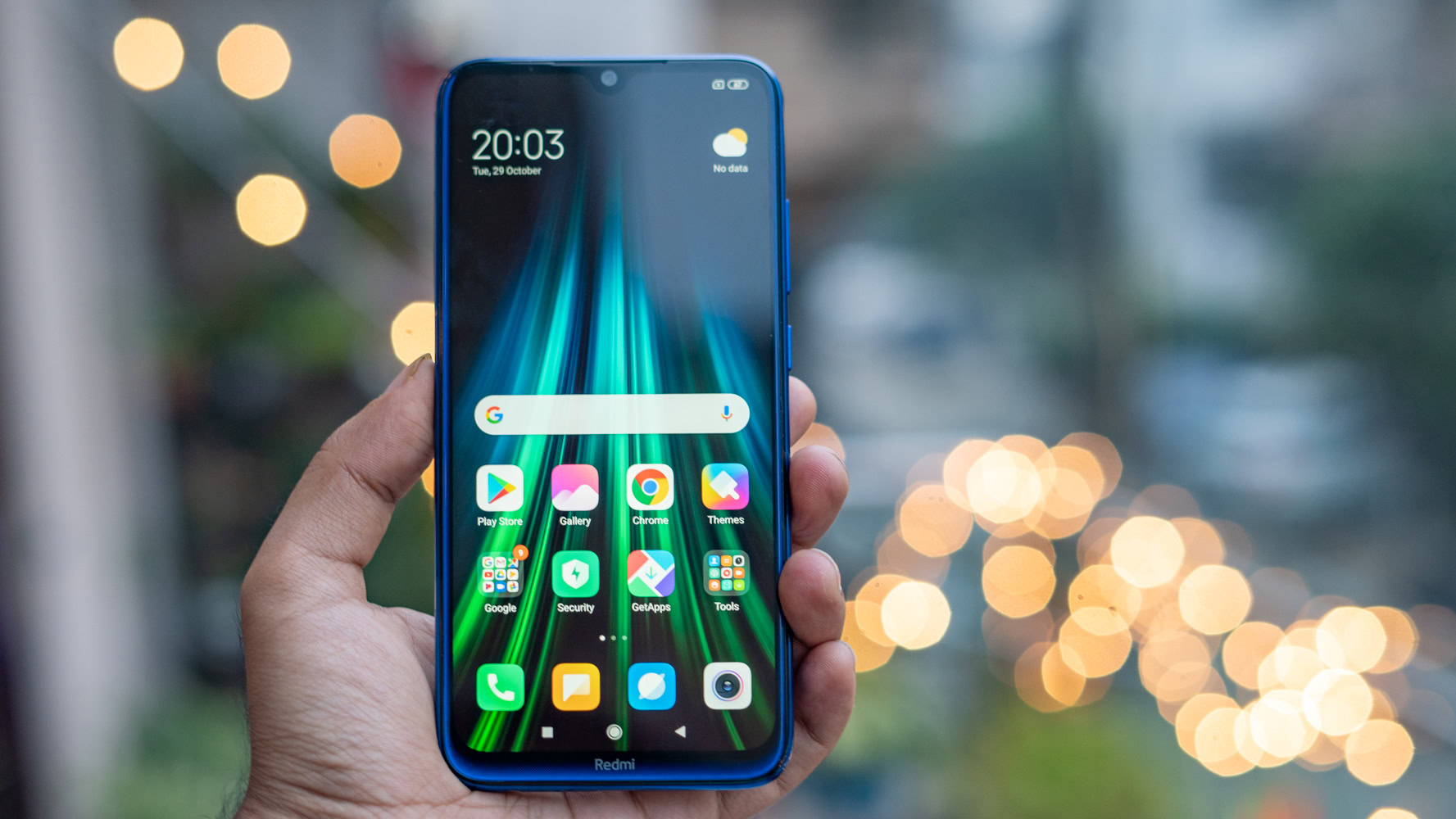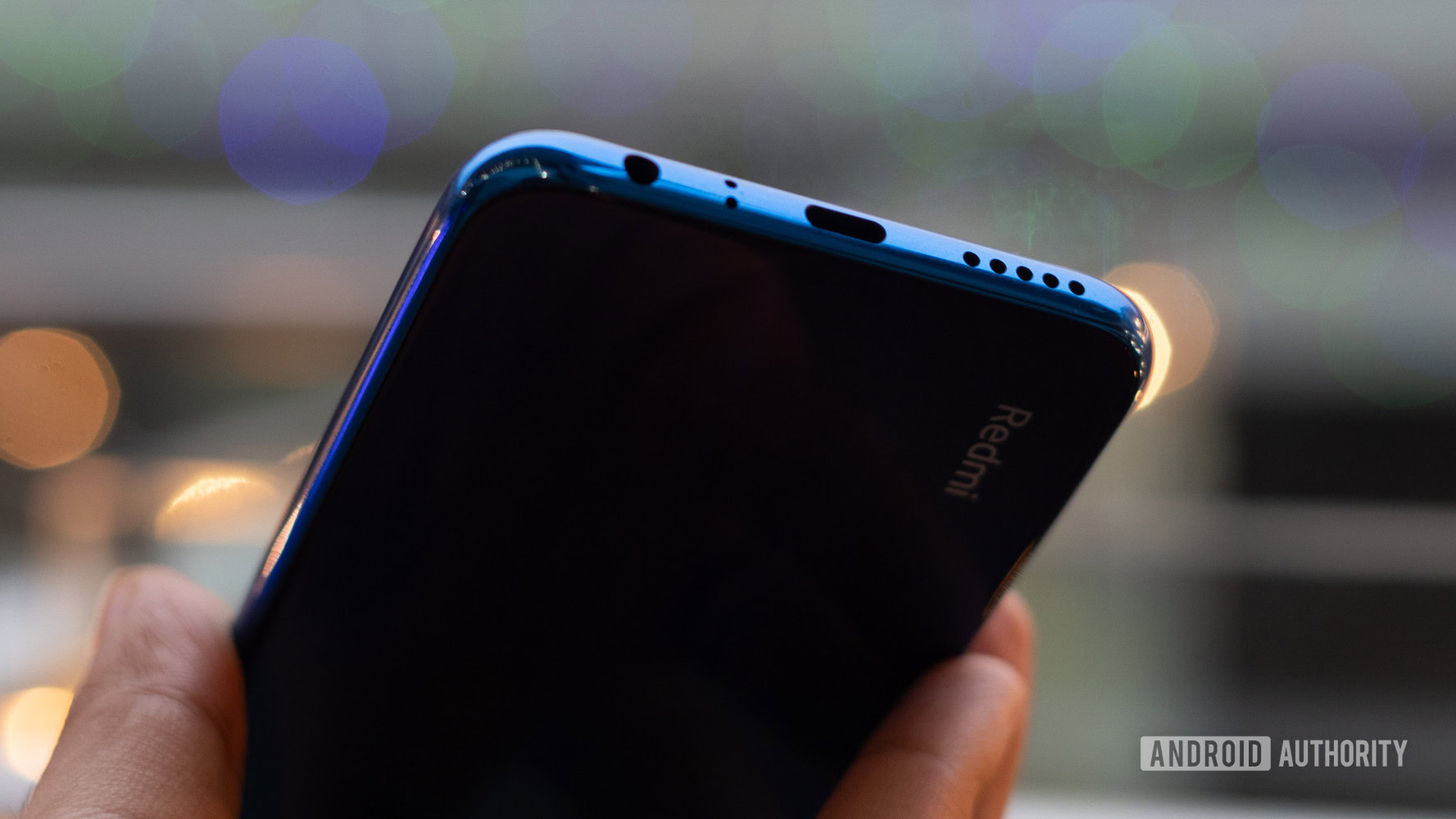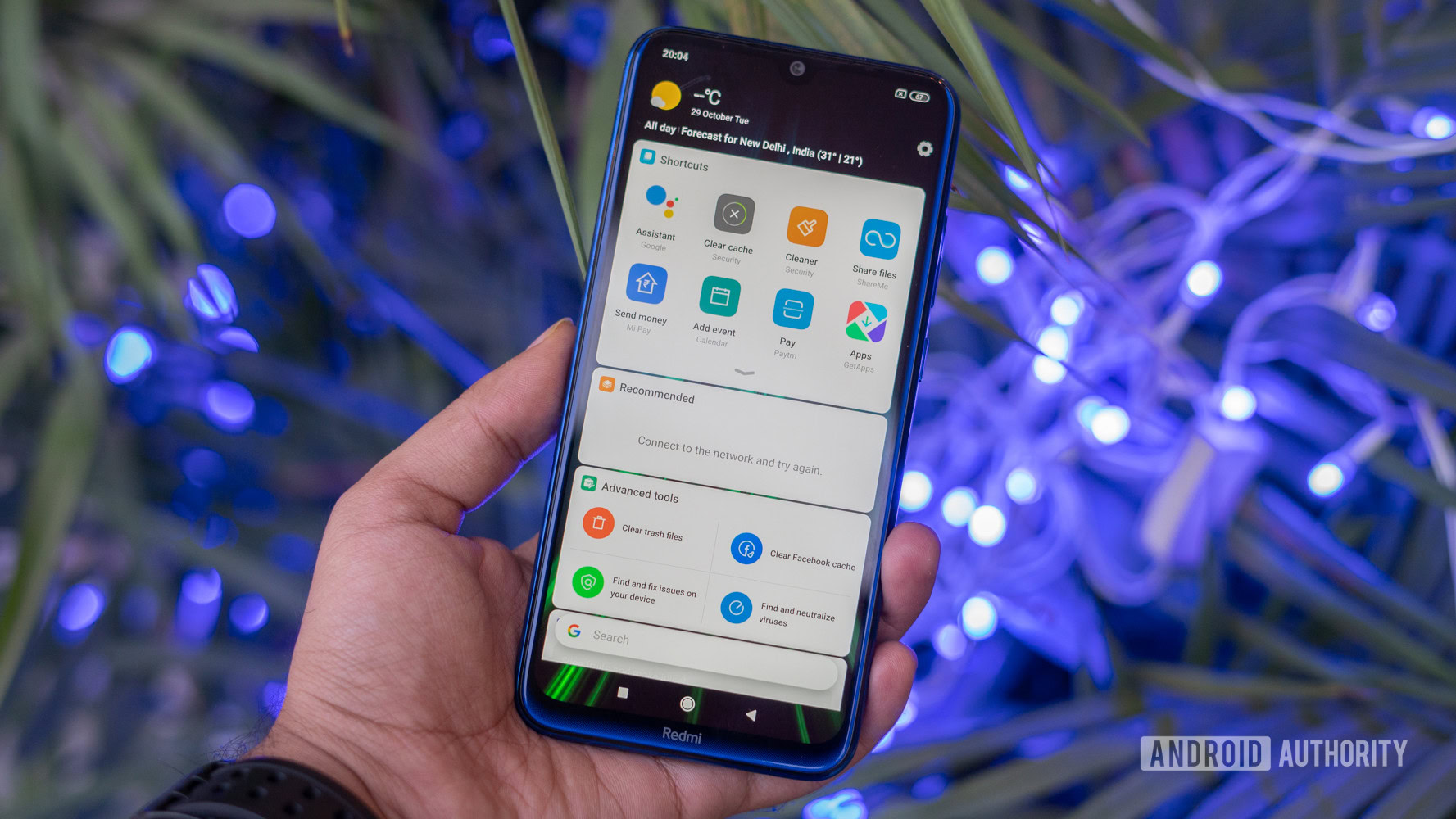Affiliate links on Android Authority may earn us a commission.Learn more.
Redmi Note 8 review: A quality mid-range smartphone
July 31, 2025
Xiaomi Redmi Note 8
What we like
What we don’t like
Our scores
While the Redmi Note Pro series is the mid-range leader for Xiaomi, the company has maintained a fantastic tier-two option for users who don’t want to spend as much, but still want some of the niceties introduced by the new generation of hardware. Accompanying theRedmi Note 8 Pro, a phone that we rated very highly in our review, is the all-new Redmi Note 8. The phone comes in somewhere between the Redmi Note 7S that it replaces, and the higher-end Redmi Note 8 Pro.
The Redmi Note series has almost always been an easy recommendation for its best-in-class performance. Can the Redmi Note 8 continue the momentum? We find out in theAndroid Authorityreview.

Redmi Note 8: The big picture
The Redmi Note 8 enters a competitive landscape that has more than a few quality options available to buyers. Between the brand appeal of Samsung, clean software offered by Motorola, andgrowing threat of realme’s focus on design and specifications, Xiaomi has taken big steps forward. Including a quad-camera setup and fast-charging should certainly help the Redmi Note 8 bridge the gap. However, the design is starting to look a bit dull and the internals are slowing their advances.
What’s in the box
Xiaomi has stepped up its game with in-box contents: It now throws in an 18W fast charger in the box. Additionally, you’ll find the usual TPU case, USB-C cable, and SIM ejector tool. It would have been nice to see apair of earphonesthrown in for good measure, but you’ve probably got a favorite pair lying around anyway.
The design of the Redmi Note 8 leans more towards theRedmi Note 7Sthan the Redmi Note 8 Pro. While the latter incorporates a curvy design and a luxurious build that belies its price, the Redmi Note 8 is very much a mid-range smartphone as far as looks go. The entire design is an extension of the flattened-out, glass-and-metal sandwich that first debuted on theRedmi Note 7. Yes, Xiaomi’s budget portfolio can get quite complicated.

The Redmi Note 8 places its 6.3-inch display underGorilla Glass 5, which is flanked by not-too-large bezels on three sides. Xiaomi’s decision to run a color-matched blue trim around the display area is questionable. Personally, I think it cheapens the look of the phone, but you may feel differently. The chin at the bottom is inoffensive even though the Redmi branding comes across as a bit much. A small notification LED sits to the left of the waterdrop notch. The LED is just a bit too small to be noticeable from a distance, but it is better than not having one at all.
It is hard to fault the construction of Xiaomi devices, and the Redmi Note 8 is no exception. From the volume rocker and power button, to the SIM tray and USB-C port at the bottom, high-quality construction is apparent everywhere. The buttons are solid with no wobble and they offer near-perfect tactile feedback. The phone even has an IR blaster that you can use to control electronics like televisions and air conditioners.

The rear panel is also made of Gorilla Glass 5 and sports a subtle blue/purple gradient. A fingerprint scanner sits in the center and is as fast as they come. The quad-camera module, however, sits way too far above the surface glass. This causes the phone to rock when placed on a table, and it will inevitably catch on to your pocket when sliding it in.
Overall, the Redmi Note 8’s design should appeal to most. Sure, it isn’t quite as exciting as theRedmi Note 8 Pro, but that’s a concession you have to make for a lower price point.

The display on the Redmi Note 8 isn’t bad, but in a sea of great panels it comes across as a bit underwhelming. Out of the box, the color tuning skews too far towards cooler tones. This has a profound effect on how images and videos look on the display. That said, it is easy to switch to a more neutral color profile that immediately makescontentlook a lot more natural.
Unlike some competing devices, such as theMoto One Macro, the Redmi Note 8 has a Full HD+ display. Stretched across 6.3-inches, the resolution is more than adequate. Icons and text look perfectly crisp and reading long web pages is a pleasurable experience.

We measured peak brightness levels of about 430 nits with the display set to the standard mode. This is just under Xiaomi’s claimed 450 nits peak brightness level. The Redmi Note 8 is certainly not the brightest phone in the segment, but unless you spend a lot of time walking about in direct sunlight you shouldn’t face much of a problem.
Performance
The Snapdragon 665 chipset powering the Redmi Note 8 is the same as that of therealme 5. Performance doesn’t differ too much from the Snapdragon 660 chipset that powers the Redmi Note 7S. The chipset is based on an 11nm architecture, which should make it a bit more frugal. The 665’s CPU is a touch slower than the 660, while the 665’s GPU is a tad more powerful. All-in-all, the performance gains and losses should even out.
As far as general performance is concerned, the phone is usually able to keep up with whatever you throw at it. Jumping between apps will on occasion cause frame drop and a bit of jitter.
The gaming experience is not amazing. Pushing the graphics setting inPUBGresults in noticeable lag and dropped frames. It doesn’t help that the phone heats up a fair bit over just a few minutes of gaming. The Snapdragon 66x family of chipsets are being outpaced by their successors, and it shows here.
We put the phone through a standard range of benchmarks and the results were in line with what we expected. The phone manages a score of 170,973 points in AnTuTu, which is ahead of both the Redmi Note 7S that it replaces and the Moto One Macro. Graphics performance, however, benchmarked worse than the Redmi Note 7S and especially the Moto One Macro.
While we’re starting to see 5,000mAh batteries in the entry-level segment, the 4,000mAh cell in the Redmi Note 8 is definitely no slouch. The phone easily lasts a full day and then some. In my time with the phone, I found it hard to deplete the battery with heavy use, including a few hours streaming Spotify and YouTube, browsing Reddit, and sending a dozen or so emails.
The bigger and more relevant change for end-users is support for 18W charging. Not only that, Xiaomi tossed a fast charger in the box. A full charge takes just over two hours. Unfortunately, the phone doesn’t include support for wireless charging, but that is common at this price.
I’ve been very vocal about my disdain for the preloaded bloat on Xiaomi’s devices. Unfortunately, it doesn’t look like the company is taking steps to tone it down. Starting from the onboarding process, Xiaomi pushes recommendations for a wide range of apps to download. For the first-time user, it can be easy to click next and start the download process for this junk.
Even if you manage to avoid the initial recommendations, there are umpteen apps included on the phone. These range from MIUI standards, like a file explorer, weather app, and music app, but also includes a bunch of games, PayTM, Helo, and third-party music apps. A majority of these cannot be removed. Add to that the ads and app recommendations strewn across system apps, and it quickly becomes a sub-optimal user experience.
That’s not to say that’s the experience is all bad. There are nifty additions strewn across including robust options for customizing the phone’s interface to really make it your own. Apps like ShareMe make it very easy to transfer large files between phones and even over to your computer. There’s a lot of thought that has gone into Xiaomi’s first-party apps, now if only they would tone down the aggressive advertising, it would become a lot easier to live with the software.
Since we published the review, Xiaomi has pushed out a series of software updates that have brought the phone to the November security patch. Additionally, there have been feature additions like a new quick share dialog box, Mi Share as well as Digital Wellbeing, general software stability improvements.
As of July 21, 2025, the phone has received the latest March security patches. The update also added the ability to lock any app behind PIN or fingerprint-based security.
In May 2020, Xiaomi issued the MIUI 11.0.5.0 update with the latest security patches. Unfortunately, the phone still doesn’t run Android 10. No other features were included either.
Entry-level phones aren’t immune to the rapid commoditization of camera components. While the primary sensor on the Redmi Note 8 is the same 48MP module of the Redmi Note 7S, this time it is flanked by three additional sensors. These include an ultra-wide shooter, a depth sensor, as well as a dedicated macro camera. This matches the camera set up of competing phones by realme and Motorola, and is likely to become the defacto layout in the segment.
For an entry-level device, the primary camera on the Redmi Note 8 does a really good job at capturing relatively true-to-life images. I found pictures to be well exposed, and colors were very natural looking. Pixel-peeping reveals a lot of oversharpening to give the images a bit of a pop. However, details are thankfully not reduced to a smudge as is often the case.
The phone tends to boost shadows in an attempt to pull out details in darker regions. This does introduce low-level noise, but not to the point of detracting from the image. In fact, if all you do is share images on social media, you probably won’t find it offensive at all.
The ultra-wide camera is one of the best that I’ve seen on entry-level hardware. There isn’t a drastic difference in the color tuning between the primary and ultra-wide sensor. Like the regular camera, the ultra-wide sensor also oversharpens images. This gives final results an illusion of including more detail than actually exists. Darker sections are comparatively low on details, but this tends to be the case with mid-range hardware. The Redmi Note 8 is definitely one of the best performers in its price category.
A macro camera is the latest addition. This camera, meant for close-ups, lets you get as close as 2cm from your subject. While the sensor doesn’t have the resolution to capture a lot of detail, it allows you to get creative and shoot interesting angles. That said, I’m left wondering whether cropping in from the full 48MP image might provide similar, if not better, results.
Even more interesting is the fact that the macro sensor works rather well indoors and other limited light conditions. Think shooting eyes, flowers, textures, and you get an idea of what you’re able to do with the macro camera.
Thanks to the dedicated depth sensor, bokeh detection isn’t bad at all. I give the phone bonus points for working well with objects, too. 4K video recording at 30fps shows signs of extra sharpening, just like the images and I observed a bit of highlight clipping as well.
People often take selfies with their smartphone cameras, and the Redmi Note 8 captures natural-looking shots with sufficient detail.
You can take a look atfull resolution Redmi Note 8 image samplesat the link.
Headphone audio from the Redmi Note 8 veers between passable and good. Even with quality headphones, there is a noticeable hiss in the background. Music sounds warm with an emphasis on bass. It isn’t the most neutral presentation, but should be good enough for listening to music while commuting.
The single loudspeaker isn’t the loudest around, but it is serviceable for listening to podcasts and alarms. Just don’t crank it up to play music — there’s not much of bottom end here and the highs can sound a bit too shrill.
Specifications
Value for money
Up till a few quarters ago, the Redmi Note 8 was an unchallenged competitor in the entry to mid-range smartphone segment. Since then, brands such as realme, Samsung and Motorola have made a renewed focus in the space.
Realme, in particular, is following Xiaomi’s model of bringing high-end specs to a budget price point. It certainly helps that the company’s products deliver the goods as far as performance, design, and imaging capabilities are concerned. The realme 5 is a direct competitor to the Redmi Note 8 and offers a larger battery and a flashier design at a similar price point. The Redmi Note 8, however, trounces it in imaging prowess.
Now theRedmi Note 9 Prois out and competes directly against the Redmi Note 8 Pro, it is hard to make a case for the phone. The Note 9 Pro has a better design, a newer Snapdragon 720G chipset which makes it a fantastic alternative to consider.
The recently launchedrealme 5iis another phone that goes up against the Redmi Note 8. With similar specs, it offers a bit punch in the imaging department and is generally an excellent alternative for someone looking for a different design aesthetic.
TheMotorola Moto One Macrois another option. While it won’t stun you with its imaging capability, you do get a clean, near-stock build of Android, which is appealing to a lot of users.
Now, in March 2020, there are many more options available. Therealme 6, in particular, offers up similar specifications and pairs it with a 90Hz display which is definitely a very nice to have feature.
Redmi Note 8 review: The verdict
The Redmi Note 8 is a very good smartphone that falls just short of excellence. A lot of it has to do with the sheer amount of competition in the market. Now that consumers have umpteen options that deliver on features, hardware, and design, the Redmi Note 8 isn’t quite the standout device that the line-up stood once embodied.
I’d also take a long and hard look at therealme 6. That phone pairs up an eye-catching design with excellent performance and a slick 90Hz display that really enhances the user experience.
The Redmi Note 9 Pro also presents itself as a quality alternative with a beautiful, understated design and a Snapdragon 720G chipset.
That said, as long as you can live with the quirks of MIUI, the hardware is reliable and delivers all-day battery life, reasonably good performance, and a camera that is just as good as, if not better than, the competition.
Thank you for being part of our community. Read ourComment Policybefore posting.